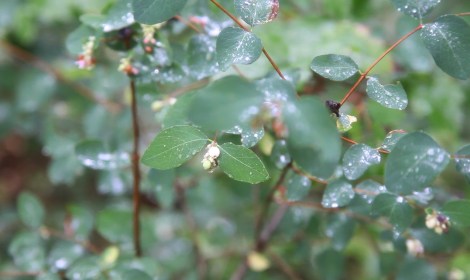The idea that food can come from, like, the ground should be obvious, but is actually something of a revelation for the average city-dweller. (Cut to every human throughout history shaking their heads and muttering, “How did things go so wrong?”) Even as urbanites go, I’m particularly hopeless in the fending-in-the-wilderness department. The only time I ever went “camping,” I ordered takeout from the nearest town. I’m not kidding.
To try to resolve this embarrassing ineptitude, Grist set up an instructional tour of a Seattle park (because I’m clearly unprepared for real outdoors) with Nate Summers, an experienced forager and educator with the Wilderness Awareness School, to learn how to feed oneself hyper-locally, waste-consciously, and resourcefully. Here are a few of the lessons we learned:
- If you’re really committed to finding wild edibles, be prepared to go hunting around in the grass for them. Since a lot of edible plants really look a lot like grass (to us, at least), this gets a little tricky! We’ve included helpful illustrations in the video above.
- Thanks to Grist, you’ve learned how to forage wild edibles? That’s great! Leave some for the rest of us — and by the rest of us, I mean other animals, insects, and living things that depend on the same ecosystem.
- Try to plan on getting stranded in the wilderness in the summertime. If it’s winter, you’re pretty much out of luck. That’s the survival game for you!
- Do you love anything and everything made out of blackberries? Congratulations – you are actually doing local ecosystems a favor with each blackberry you consume. As an invasive species, it tends to wipe out native plants in its path.
- Acorns are tasty and nutritious, but if you’re not a squirrel, they’re actually pretty hard to eat. Rather than being consumed raw, they’re commonly ground into flour. If your objective is a quick snack, they’re not the best choice.
- If it’s called a “corpseberry,” it’s probably not a good idea to eat it. Of course, just knowing the name of a poisonous berry isn’t going to help you when you’re stranded in the wilderness, so here’s what it looks like:

That’s the botanical incarnation of evil, amirite? It’s as if Voldemort were a fruit. Don’t eat that.
Alright — now that we’ve got the survival stuff out of the way, let’s get to eating. Summers came over to Grist HQ for a casual cooking demonstration, and proceeded to feed a few lucky staffers a series of delicious treats including wild greens pesto, fruit leathers, and blackberry sauce. Lucky for you, we captured his culinary secrets on camera! Tune in tomorrow for the first treat.
Also in this series:
- Foraged fruit leather is like a Fruit Roll-Up, only with fruit in it
- Want to step up your pesto game? Prepare to get down and dirty (with nature)
- Foraged blackberry sauce is the new hot fudge sauce

